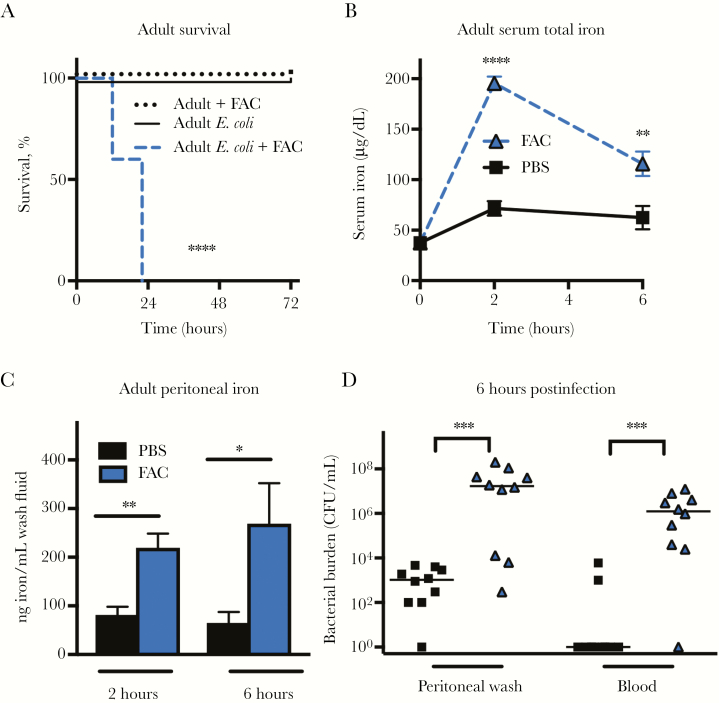Figure 5.
Supplemental iron sensitizes adult mice to Escherichia coli K1 sepsis and allows for rapid bacterial growth. Adult mice (2–4 months old) were injected intraperitoneally (IP) with 450 μg of ammonium iron(III) citrate (FAC) or an equivalent volume of phosphate-buffered saline (PBS) IP immediately prior to injection with 104 colony-forming units (CFU) of E. coli K1 IP. A, Survival of adult mice injected with FAC alone (n = 6), E. coli alone (n = 10), or E. coli with FAC (n = 10). ****P < .0001 using the log-rank test. B, Total iron in serum of adult mice injected with FAC or PBS at the time of infection. n = 4–12 per time point. Results are the combination of 2 experiments. **P < .01, ****P < .0001 using the 2-way analysis of variance Tukey multiple comparisons test. C, Peritoneal total iron levels 6 hours post–E. coli infection in FAC- and PBS-treated adult mice (n = 4–6 per group, t = 1.98, degrees of freedom = 9). Iron content is presented as ng/mL rather than ng iron/mg protein because total peritoneal protein content was significantly increased in FAC-treated mice. Error bars indicate ±1 standard error of the mean. *P < .05, **P < .01, 2-tailed t test. D, Bacterial burden in the peritoneal wash and blood of adult mice pretreated with FAC or PBS prior to E. coli infection. Bars indicate median CFU. *P < .05, ***P < .001, Mann–Whitney test. Data are combined results of 2 independent experiments.

